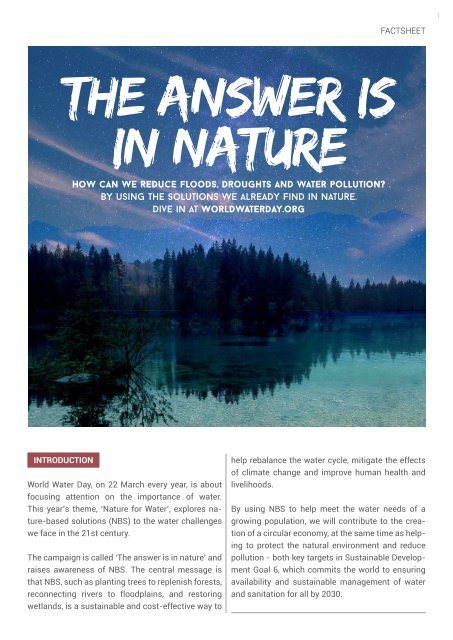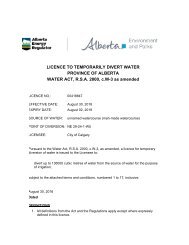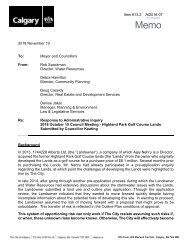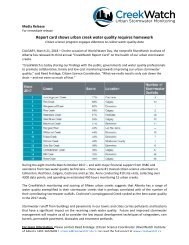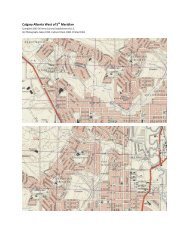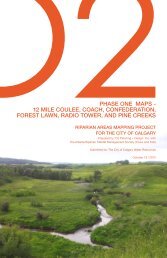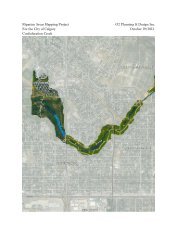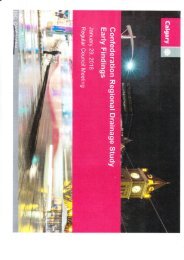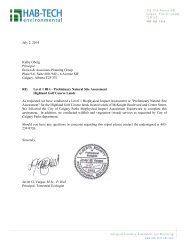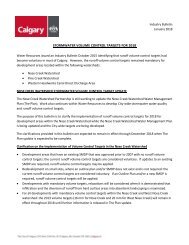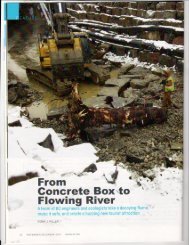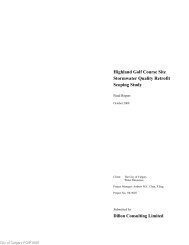World Water Day - the answer is in nature
Create successful ePaper yourself
Turn your PDF publications into a flip-book with our unique Google optimized e-Paper software.
1<br />
FACTSHEET<br />
INTRODUCTION<br />
<strong>World</strong> <strong>Water</strong> <strong>Day</strong>, on 22 March every year, <strong>is</strong> about<br />
focus<strong>in</strong>g attention on <strong>the</strong> importance of water.<br />
Th<strong>is</strong> year’s <strong>the</strong>me, ‘Nature for <strong>Water</strong>’, explores <strong>nature</strong>-based<br />
solutions (NBS) to <strong>the</strong> water challenges<br />
we face <strong>in</strong> <strong>the</strong> 21st century.<br />
The campaign <strong>is</strong> called ‘The <strong>answer</strong> <strong>is</strong> <strong>in</strong> <strong>nature</strong>’ and<br />
ra<strong>is</strong>es awareness of NBS. The central message <strong>is</strong><br />
that NBS, such as plant<strong>in</strong>g trees to replen<strong>is</strong>h forests,<br />
reconnect<strong>in</strong>g rivers to floodpla<strong>in</strong>s, and restor<strong>in</strong>g<br />
wetlands, <strong>is</strong> a susta<strong>in</strong>able and cost-effective way to<br />
help rebalance <strong>the</strong> water cycle, mitigate <strong>the</strong> effects<br />
of climate change and improve human health and<br />
livelihoods.<br />
By us<strong>in</strong>g NBS to help meet <strong>the</strong> water needs of a<br />
grow<strong>in</strong>g population, we will contribute to <strong>the</strong> creation<br />
of a circular economy, at <strong>the</strong> same time as help<strong>in</strong>g<br />
to protect <strong>the</strong> natural environment and reduce<br />
pollution - both key targets <strong>in</strong> Susta<strong>in</strong>able Development<br />
Goal 6, which commits <strong>the</strong> world to ensur<strong>in</strong>g<br />
availability and susta<strong>in</strong>able management of water<br />
and sanitation for all by 2030.
2<br />
HEADLINE FACTS<br />
<strong>Water</strong> demand:<br />
• 2.1 billion people lack access to safely managed dr<strong>in</strong>k<strong>in</strong>g<br />
water services.<br />
• By 2050, <strong>the</strong> world’s population will have grown by an<br />
estimated 2 billion people and global water demand<br />
could be up to 30% higher than today.<br />
• Agriculture currently accounts for 70% of global water withdrawals,<br />
mostly for irrigation – a figure which r<strong>is</strong>es <strong>in</strong> areas<br />
of high water stress and population density. Industry takes<br />
20% of <strong>the</strong> total, dom<strong>in</strong>ated by energy and manufactur<strong>in</strong>g.<br />
The rema<strong>in</strong><strong>in</strong>g 10% goes to domestic use – <strong>the</strong> proportion<br />
used for dr<strong>in</strong>k<strong>in</strong>g water <strong>is</strong> much less than 1%.<br />
<strong>Water</strong> availability:<br />
• Today, around 1.9 billion people live <strong>in</strong> potentially severely<br />
water-scarce areas. By 2050, th<strong>is</strong> could <strong>in</strong>crease to<br />
around 3 billion people.<br />
<strong>Water</strong> quality:<br />
• An estimated 1.8 billion people use an unimproved<br />
source of dr<strong>in</strong>k<strong>in</strong>g water with no protection aga<strong>in</strong>st contam<strong>in</strong>ation<br />
from human faeces.<br />
• Globally, over 80% of <strong>the</strong> wastewater generated by society<br />
flows back <strong>in</strong>to <strong>the</strong> environment without be<strong>in</strong>g treated<br />
or reused.<br />
Climate and environment:<br />
• The number of people at r<strong>is</strong>k from floods <strong>is</strong> projected<br />
All <strong>in</strong>formation <strong>in</strong> th<strong>is</strong> factsheet comes from UNESCO (2018) United Nations <strong>World</strong> <strong>Water</strong> Development Report 2018: Nature-based solutions for water<br />
unless specified o<strong>the</strong>rw<strong>is</strong>e.
3<br />
to r<strong>is</strong>e from 1.2 billion today to around 1.6 billion <strong>in</strong><br />
2050 – nearly 20% of <strong>the</strong> world’s population.<br />
• Today, around 1.8 billion people are affected by land<br />
degradation and desertification. At least 65% of forested<br />
land <strong>is</strong> <strong>in</strong> a degraded state.<br />
• An estimated 64-71% of natural wetlands have been<br />
lost s<strong>in</strong>ce 1900 as a result of human activity.<br />
• Soil erosion from croplands carries away 25 to 40<br />
billion tonnes of topsoil every year, significantly reduc<strong>in</strong>g<br />
crop yields and <strong>the</strong> soil’s ability to regulate<br />
water, carbon and nutrients. The runoff, conta<strong>in</strong><strong>in</strong>g<br />
large amounts of nitrogen and phosphorous, <strong>is</strong> also<br />
a major contributor to water pollution.<br />
as frequent extreme flood<strong>in</strong>g, can be mitigated by a range<br />
of NBS, such as riparian buffers or connect<strong>in</strong>g rivers to<br />
floodpla<strong>in</strong>s.<br />
The application of certa<strong>in</strong> NBS creates what <strong>is</strong> known as<br />
‘green <strong>in</strong>frastructure’: natural or semi-natural systems that<br />
give us equivalent or similar benefits to conventional, human-built<br />
‘grey <strong>in</strong>frastructure’.<br />
NBS often produce benefits beyond water-related services.<br />
For example, constructed wetlands used for wastewater<br />
treatment can provide biomass for energy production,<br />
improve biodiversity and create recreational spaces and<br />
associated employment.<br />
WHAT ARE NATURE-BASED SOLUTIONS (NBS)?<br />
Restor<strong>in</strong>g forests, grasslands and natural wetlands, reconnect<strong>in</strong>g<br />
rivers to floodpla<strong>in</strong>s, creat<strong>in</strong>g buffers of vegetation<br />
along water courses – <strong>the</strong>se are all examples of NBS that<br />
help <strong>the</strong> management of water availability and quality.<br />
Most NBS, <strong>in</strong>clud<strong>in</strong>g <strong>in</strong> urban landscapes, essentially <strong>in</strong>volve<br />
<strong>the</strong> management of vegetation, soils and/or wetlands,<br />
<strong>in</strong>clud<strong>in</strong>g rivers and lakes.<br />
NBS are not a panacea to <strong>the</strong> critical water-related challenges<br />
we face as <strong>the</strong> global population grows, but <strong>the</strong>y<br />
can provide <strong>in</strong>novative and cost-effective options for supplement<strong>in</strong>g<br />
<strong>in</strong>sufficient or age<strong>in</strong>g water <strong>in</strong>frastructure. For<br />
example:<br />
• <strong>Water</strong> availability and supply: <strong>Water</strong> storage via natural<br />
wetlands, soil mo<strong>is</strong>ture and/or groundwater recharg<strong>in</strong>g<br />
can be more susta<strong>in</strong>able and cost-effective than grey <strong>in</strong>frastructure,<br />
such as dams.<br />
• <strong>Water</strong> quality: Pollution from agriculture can be drastically<br />
reduced by NBS such as conservation agriculture, which<br />
protects soil from erosion, or riparian buffers, strips of land<br />
along water courses planted with native trees and shrubs.<br />
• R<strong>is</strong>k management: The effects of climate change, such
4<br />
WHAT WOULD GREEN AND GREY INFRASTRUCTURE<br />
IN THE WATER CYCLE LOOK LIKE?<br />
• At <strong>the</strong> start of <strong>the</strong> cycle, as water bubbles up from a<br />
spr<strong>in</strong>g or falls as ra<strong>in</strong>, healthy forests and susta<strong>in</strong>ably-managed<br />
fields ensure stable, good quality soil for<br />
water to fall onto and flow through.<br />
• Human-built reservoirs and dams store water, which<br />
allows irrigation of surround<strong>in</strong>g land, energy generation,<br />
and regulates <strong>the</strong> river flow.<br />
• Protected wetlands help filter and purify <strong>the</strong> water and<br />
enhance biodiversity, and diverted water can recharge<br />
groundwater resources and mitigate flood<strong>in</strong>g downstream.<br />
• Purification and treatment plants make freshwater and<br />
wastewater ready for human consumption and pump<br />
it <strong>in</strong>to networks of pipes.<br />
• Human-made barriers and deliberate use of natural<br />
flood pla<strong>in</strong>s can control flood<strong>in</strong>g and mitigate d<strong>is</strong>aster<br />
r<strong>is</strong>k as water returns to <strong>the</strong> start of <strong>the</strong> cycle.<br />
NATURE-BASED SOLUTIONS AND THE SUSTAINABLE<br />
DEVELOPMENT GOALS<br />
NBS for manag<strong>in</strong>g water supply and quality support <strong>the</strong><br />
achievement of all targets <strong>in</strong> Goal 6: to ensure availability<br />
and susta<strong>in</strong>able management of water and sanitation<br />
for all.<br />
NBS can also play a role <strong>in</strong> a range of o<strong>the</strong>r Susta<strong>in</strong>able<br />
Development Goals:<br />
• Goal 1: No poverty, Goal 2: Zero hunger, Goal 3: Good<br />
health: New jobs are often created by NBS, and improved<br />
health from better quality water means higher<br />
productivity.<br />
• Goal 7: Affordable, clean energy, Goal 9: Industry,<br />
<strong>in</strong>novation and <strong>in</strong>frastructure, Goal 11: Susta<strong>in</strong>able<br />
cities and communities, Goal 12: Responsible consumption<br />
and production: NBS require little or no energy<br />
and so can reduce reliance on energy-hungry grey<br />
systems. They also help provide more susta<strong>in</strong>able water<br />
resources to serve grow<strong>in</strong>g settlements.<br />
• Goal 14: Life below water, Goal 15: Life on land: Wetlands<br />
can reduce pollution by filtration and <strong>in</strong>crease biodiversity<br />
by expand<strong>in</strong>g natural habitats.<br />
EXAMPLES OF NATURE-BASED SOLUTIONS<br />
Sand dams<br />
In arid areas, <strong>the</strong> riverbeds of seasonal, <strong>in</strong>termittent<br />
rivers and streams often hold shallow groundwater reserves,<br />
which are recharged every time <strong>the</strong> rivers flow.<br />
While <strong>in</strong>dividuals may dig down to scoop out water for
5<br />
<strong>the</strong>ir families, <strong>the</strong>se water resources are rarely ever used<br />
on a systematic scale for agriculture and o<strong>the</strong>r activities.<br />
Sand dams are walls dug <strong>in</strong>to <strong>the</strong> ground across <strong>the</strong> river<br />
bed. On <strong>the</strong> Sashane river <strong>in</strong> Zimbabwe, sand dams<br />
have been built and fitted with low-cost, solar-powered<br />
pumps. By heighten<strong>in</strong>g <strong>the</strong> dam <strong>in</strong> stages, sediment<br />
builds up beh<strong>in</strong>d <strong>the</strong> dam, <strong>in</strong>creas<strong>in</strong>g <strong>the</strong> amount of water<br />
stored and mak<strong>in</strong>g it accessible via <strong>the</strong> pumps.<br />
Th<strong>is</strong> supplementary water source extends <strong>the</strong> cropp<strong>in</strong>g<br />
season for local farmers and helps produce extra<br />
yield, which <strong>in</strong> turn encourages biodiversity. Community-based<br />
monitor<strong>in</strong>g systems help manage <strong>the</strong> resource<br />
and ensure <strong>the</strong>re <strong>is</strong> enough for domestic as well<br />
as commercial uses.<br />
Landscape restoration<br />
Unusually low ra<strong>in</strong>fall <strong>in</strong> 1985–86, comb<strong>in</strong>ed with<br />
excessive logg<strong>in</strong>g, led to <strong>the</strong> worst droughts <strong>in</strong> <strong>the</strong><br />
h<strong>is</strong>tory of Rajasthan, India. The d<strong>is</strong>trict of Alwar, one<br />
of <strong>the</strong> poorest <strong>in</strong> <strong>the</strong> state, was severely affected.<br />
The groundwater table had receded below critical<br />
levels, which led to Government restrictions on any<br />
fur<strong>the</strong>r groundwater extractions.<br />
With <strong>the</strong> support of local NGOs, communities <strong>in</strong><br />
<strong>the</strong> area constructed small-scale water harvest<strong>in</strong>g<br />
structures comb<strong>in</strong>ed with <strong>the</strong> regeneration of forests<br />
and soils, particularly <strong>in</strong> upper catchments, to<br />
help recharge groundwater resources.<br />
<strong>Water</strong> supplies were re-establ<strong>is</strong>hed <strong>in</strong> 1,000 villages<br />
across <strong>the</strong> state; five rivers that used to run dry after<br />
<strong>the</strong> annual monsoon season began flow<strong>in</strong>g aga<strong>in</strong><br />
and f<strong>is</strong>heries <strong>in</strong> <strong>the</strong>m re-establ<strong>is</strong>hed; groundwater<br />
levels rose by an estimated six metres; productive<br />
farmland <strong>in</strong>creased from 20% to 80% <strong>in</strong> <strong>the</strong> catchment<br />
area; crucial forest cover, <strong>in</strong>clud<strong>in</strong>g <strong>in</strong> farmlands,<br />
which helps to ma<strong>in</strong>ta<strong>in</strong> <strong>the</strong> <strong>in</strong>tegrity and water-reta<strong>in</strong><strong>in</strong>g<br />
capacity of <strong>the</strong> soil, <strong>in</strong>creased by 33%;<br />
and <strong>the</strong> return of wildlife such as antelope and leopard<br />
has been observed.<br />
Conservation agriculture<br />
Conservation agriculture <strong>is</strong> based on three pr<strong>in</strong>ciples:<br />
m<strong>in</strong>imiz<strong>in</strong>g soil d<strong>is</strong>turbance; ma<strong>in</strong>ta<strong>in</strong><strong>in</strong>g a cont<strong>in</strong>uous<br />
soil cover of organic mulch and/or plants; and cultivat<strong>in</strong>g<br />
diverse plant species.<br />
Elim<strong>in</strong>at<strong>in</strong>g or m<strong>in</strong>im<strong>is</strong><strong>in</strong>g till<strong>in</strong>g or plough<strong>in</strong>g avoids d<strong>is</strong>turb<strong>in</strong>g<br />
and break<strong>in</strong>g up <strong>the</strong> topsoil structure, as well as<br />
reduces em<strong>is</strong>sions from farm mach<strong>in</strong>ery. Th<strong>is</strong> has been<br />
found to keep <strong>the</strong> soil more stable, <strong>in</strong>crease dra<strong>in</strong>age,<br />
slow down runoff, and drastically reduce pollution of<br />
nearby water sources.<br />
The economic benefits of conservation agriculture have<br />
been establ<strong>is</strong>hed <strong>in</strong> various systems around <strong>the</strong> world,<br />
from smallholder agricultural systems <strong>in</strong> Lat<strong>in</strong> America<br />
and sub-Saharan Africa to large-scale commercial production<br />
systems <strong>in</strong> Brazil and Canada. Currently, about<br />
1.8 million km2 of croplands are under conservation agriculture,<br />
represent<strong>in</strong>g about 12.5% of global cropland<br />
extent, an <strong>in</strong>crease of nearly 70% s<strong>in</strong>ce 2008.<br />
Sponge cities, Ch<strong>in</strong>a<br />
The Ch<strong>in</strong>a Government has launched <strong>the</strong> ‘Sponge City’<br />
<strong>in</strong>itiative to improve water availability <strong>in</strong> urban settlements.<br />
City authorities will use a comb<strong>in</strong>ation of NBS<br />
and grey <strong>in</strong>frastructure to reduce urban water-logg<strong>in</strong>g,<br />
improve local ecosystems, and reta<strong>in</strong> urban runoff for<br />
eventual reuse.<br />
By 2020, <strong>the</strong> 16 pilot cities will implement a range of<br />
measures, such as green roofs and walls, permeable<br />
pavements, and bioswales (constructed filtration channels)<br />
to capture water and divert it back <strong>in</strong>to revitalized<br />
natural storage for irrigation and clean<strong>in</strong>g purposes dur<strong>in</strong>g<br />
periods of drought.<br />
The project’s objective <strong>is</strong> for 70% of ra<strong>in</strong> water to be absorbed<br />
and reused through improved water permeation,<br />
retention and storage, purification and dra<strong>in</strong>age, as well<br />
as water sav<strong>in</strong>g and reuse. Th<strong>is</strong> goal should be met by<br />
20% of urban areas by <strong>the</strong> year 2020 and by 80% of urban<br />
areas by <strong>the</strong> year 2030.
6<br />
(1) Not<strong>in</strong>g that <strong>the</strong> 196 Parties to <strong>the</strong> CBD have agreed <strong>in</strong> dec<strong>is</strong>ion XIII/5 on guidance for <strong>in</strong>tegrat<strong>in</strong>g biodiversity considerations <strong>in</strong>to ecosystem restoration to “Avoid<br />
<strong>the</strong> afforestation of grasslands and ecosystems with naturally low tree cover.”<br />
(2) Built elements that <strong>in</strong>teract with natural features to enhance water-related ecosystem services. Source: Adapted from UNEP-DHI/IUCN/TNC (2014, table 1, p. 6).<br />
WORLD WATER DEVELOPMENT REPORT 2018 AND THE NEED FOR MORE RESEARCH<br />
For <strong>in</strong>-depth detail on <strong>nature</strong>-based solutions for water, please see <strong>the</strong> <strong>World</strong> <strong>Water</strong> Development Report<br />
2018 that <strong>is</strong> released on 22 March 2018. While <strong>the</strong>re <strong>is</strong> a great deal of excit<strong>in</strong>g progress to report, <strong>the</strong> publication<br />
acknowledges <strong>the</strong> need for more research <strong>in</strong>to key areas around <strong>the</strong> performance, impact and scalability<br />
of NBS, among o<strong>the</strong>r <strong>is</strong>sues.


